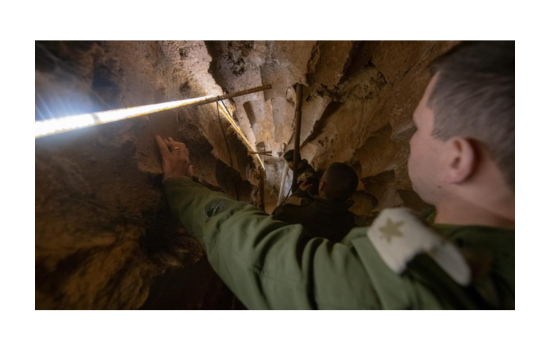Tal Schneider
Times of Israel, Jan. 2, 2024
“Eventually, Hezbollah got everything it needed from the Koreans. By 2014, they’d had 25 years of interaction, in the course of which Hezbollah received knowledge and technology to the point where it was able to dig and build the tunnels by itself.”
Two weeks ago, the IDF spokesman revealed one of the biggest attack tunnels in the Gaza Strip — four kilometers long, wide enough for vehicles to drive through, and running from Jabaliya, north of Gaza City, up until some 400 meters from the Erez border crossing into Israel.
While the tunnel did not cross the border, it presumably could have enabled terrorists on motorcycles and other vehicles to drive underground from the Jabaliya area and exit close to the border before IDF surveillance soldiers or patrols could block them. The IDF did not specify whether this was the case when 3,000 Hamas-led terrorists poured into Israel on October 7, slaughtering 1,200 people and abducting 240.
The uncovering of this vast tunnel, of which there are several more in Gaza, has revived discussion of similar tunnels near, at and under the Lebanon border — especially amid the ongoing clashes there with the Iranian-backed Hezbollah terrorist army, the forced evacuation of tens of thousands of Israeli residents of the north, and the Israeli leadership’s repeated insistence that Hezbollah must be forced back from the border and deterred.
The Lebanon tunnel project was begun and developed long before the one in Gaza. Existing intelligence indicates a vast tunnel network in southern Lebanon, deep and multi-pronged.
At the Alma Research and Education Center, which focuses on the security challenges on Israel’s northern border, researchers have spent many years investigating Lebanon’s underworld. Tal Beeri, the director of Alma’s Research Department, who served for decades in IDF intelligence units, has exposed that subterranean network in material based on considerable open-source intelligence.
… [To read the full article, click here]


